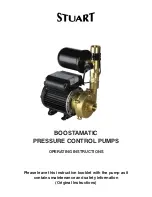
Page 26
Table 14. Normal Operating Pressures* SPB*H4S45Y
1
Use tables to perform maintenance checks; it is not a pro-
cedure for charging the system. Minor variations in these
pressures may be due to differences in installations. Signifi-
cant deviations could mean that the system is not properly
charged or that a problem exists with some component in the
system.
Normal Operating Pressures − Cooling
SPB*
H4
−036
−048
−060
°
F
(
°
C)**
Liq
Vap
Liq
Vap
Liq
Vap
First Stage (Low Capacity) Pressure
65
(18.3)
220
141
224
143
230
137
75
(23.9)
254
144
259
143
267
139
85
(29.4)
295
148
302
147
311
141
95
(35.0)
340
150
346
149
357
144
105
(40.6)
389
153
396
152
398
147
115
(46.1)
444
156
450
155
453
149
Second Stage (High Capacity) Pressure
65
(18.3)
232
129
238
138
232
131
75
(23.9)
269
136
278
140
276
133
85
(29.4)
312
140
321
142
320
136
95
(35.0)
346
142
372
144
367
138
105
(40.6)
409
145
424
147
421
141
115
(46.1)
465
148
481
149
479
144
Normal Operating Pressures − Heating
First Stage (Low Capacity) Pressure
50
(10)
350
115
336
114
385
108
60
(15.5)
372
136
363
135
414
126
Second Stage (High Capacity) Pressure
20
(−7.0)
321
61
289
57
332
59
30
(−1.0)
347
74
294
69
349
67
40
(4.4)
367
90
321
80
361
75
50
(10)
387
110
341
110
383
85
60
(15.5)
395
131
361
128
425
122
*
Typical pressures only, expressed in psig (/− 10 and va-
por+/− 5 psig); indoor match up, indoor air quality, and indoor load
will cause the pressures to vary. These operating pressures are
also listed on the unit charging sticker (580005−01) located on the
access panel.
** Temperature of air entering outdoor coil.
Table 15. HFC−410A Temp. (°F) − Pressure (Psig)
°F
Psig
°F
Psig
°F
Psig
°F
Psig
32
100.8
63
178.5
94
290.8
125
445.9
33
102.9
64
181.6
95
295.1
126
451.8
34
105.0
65
184.3
96
299.4
127
457.6
35
107.1
66
187.7
97
303.8
128
463.5
36
109.2
67
190.9
98
308.2
129
469.5
37
111.4
68
194.1
99
312.7
130
475.6
38
113.6
69
197.3
100
317.2
131
481.6
39
115.8
70
200.6
101
321.8
132
487.8
40
118.0
71
203.9
102
326.4
133
494.0
41
120.3
72
207.2
103
331.0
134
500.2
42
122.6
73
210.6
104
335.7
135
506.5
43
125.0
74
214.0
105
340.5
136
512.9
44
127.3
75
217.4
106
345.3
137
519.3
45
129.7
76
220.9
107
350.1
138
525.8
46
132.2
77
224.4
108
355.0
139
532.4
47
134.6
78
228.0
109
360.0
140
539.0
48
137.1
79
231.6
110
365.0
141
545.6
49
139.6
80
235.3
111
370.0
142
552.3
50
142.2
81
239.0
112
375.1
143
559.1
51
144.8
82
242.7
113
380.2
144
565.9
52
147.4
83
246.5
114
385.4
145
572.8
53
150.1
84
250.3
115
390.7
146
579.8
54
152.8
85
254.1
116
396.0
147
586.8
55
155.5
86
258.0
117
401.3
148
593.8
56
158.2
87
262.0
118
406.7
149
601.0
57
161.0
88
266.0
119
412.2
150
608.1
58
163.9
89
270.0
120
417.7
151
615.4
59
166.7
90
274.1
121
423.2
152
622.7
60
169.6
91
278.2
122
428.8
153
630.1
61
172.6
92
282.3
123
434.5
154
637.5
62
175.4
93
286.5
124
440.2
155
645.0
V − SERVICE AND RECOVERY
WARNING
Polyol ester (POE) oils used with HFC−410A refriger-
ant absorb moisture very quickly. It is very impor-
tant that the refrigerant system be kept closed as
much as possible. DO NOT remove line set caps or
service valve stub caps until you are ready to make
connections.
IMPORTANT
Use recovery machine rated for HFC−410A refrig-
erant.
If the SPB*H4 system must be opened for any kind of ser-
vice, such as compressor or drier replacement, you must
take extra precautions to prevent moisture from entering
the system. The following steps will help to minimize the
amount of moisture that enters the system during recovery
of HFC−410A.
1 − Use a regulator−equipped nitrogen cylinder to break
the system vacuum. Do not exceed 5 psi. The dry nitro-
gen will fill the system, and will help purge any mois-
ture.
2 − Remove the faulty component and quickly seal the sys-
tem (using tape or some other means) to prevent addi-
tional moisture from entering the system.






































